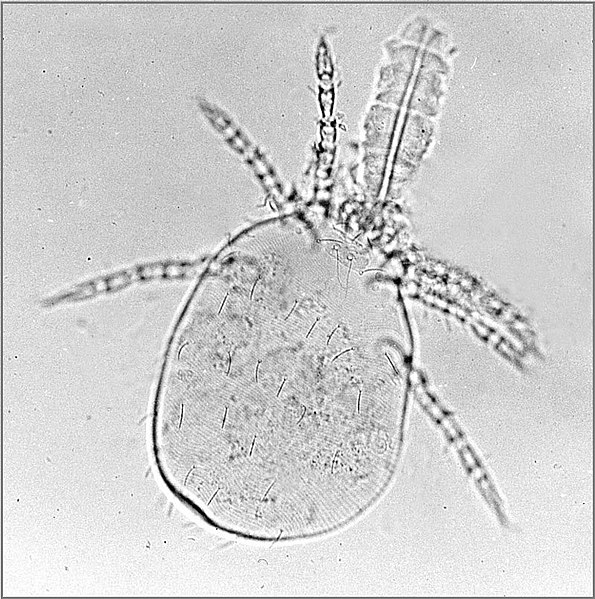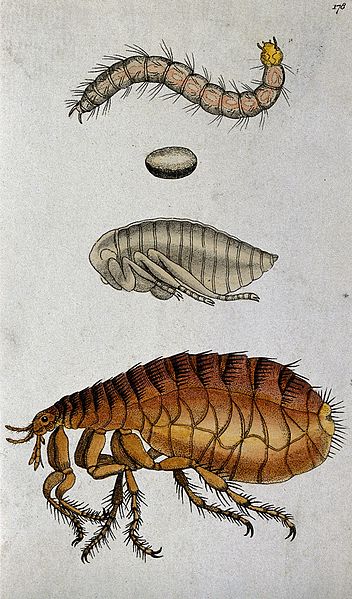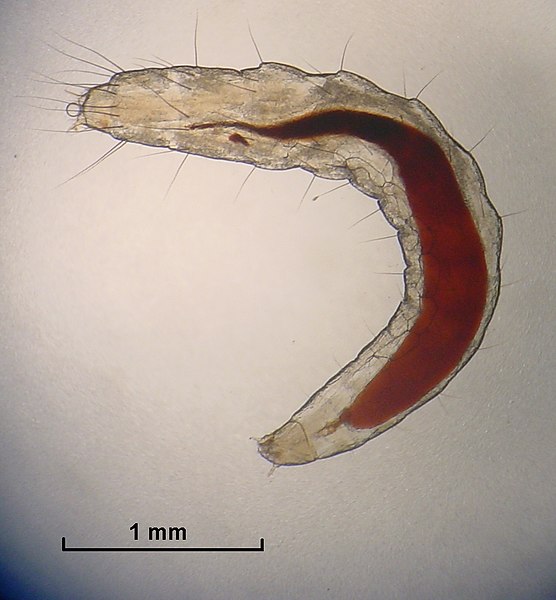Trombiculidae, commonly referred to in North America as chiggers and in Britain as harvest mites, but also known as berry bugs, bush-mites, red bugs or scrub-itch mites, are a family of mites. Chiggers are often confused with jiggers – a type of flea. Several species of Trombiculidae in their larva stage bite their animal host and by embedding their mouthparts into the skin cause "intense irritation", or "a wheal, usually with severe itching and dermatitis". Humans, being animals, are possible hosts.
Trombiculidae
Chigger-caused lesions on human skin showing characteristic welts
A Trombiculid mite larva attached to human skin
Flea, the common name for the order Siphonaptera, includes 2,500 species of small flightless insects that live as external parasites of mammals and birds. Fleas live by ingesting the blood of their hosts. Adult fleas grow to about 3 millimetres long, are usually brown, and have bodies that are "flattened" sideways or narrow, enabling them to move through their hosts' fur or feathers. They lack wings; their hind legs are extremely well adapted for jumping. Their claws keep them from being dislodged, and their mouthparts are adapted for piercing skin and sucking blood. They can leap 50 times their body length, a feat second only to jumps made by another group of insects, the superfamily of froghoppers. Flea larvae are worm-like, with no limbs; they have chewing mouthparts and feed on organic debris left on their hosts' skin.
Flea
Dog flea (from top) larva, egg, pupa and adult
Flea larva
Cenozoic flea in amber, c. 20 mya, is morphologically modern.







